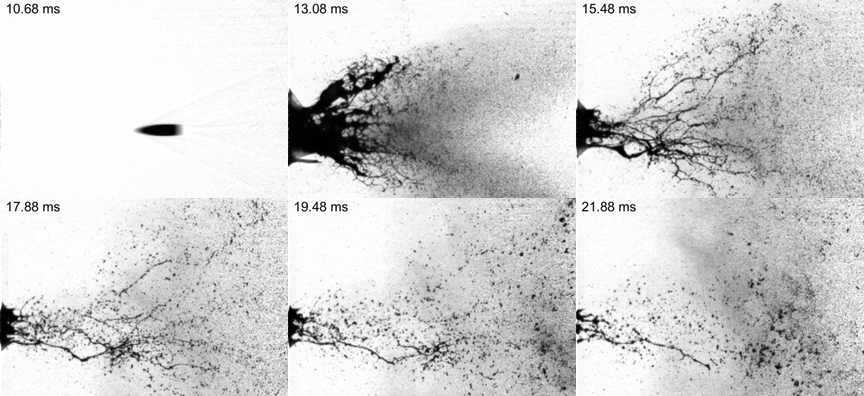From the Journal: Physics of Fluids
WASHINGTON, April 25, 2023 – Often left on the surfaces of a crime scene or on the clothes of an accused criminal, blood back spatter can be used as evidence for forensic scientists to reconstruct what occurred. However, the fluid dynamics at play are complicated, and neglecting the interaction between the blood and the muzzle gases from the firearm could skew the results.
In Physics of Fluids, by AIP Publishing, researchers from the University of Illinois Chicago and Iowa State University modeled the behavior of blood drops during secondary atomization to examine how the phenomenon affects a crime scene.
“Primary atomization of blood is caused by a gunshot (bullet). It results in multiple drops spattered in the air,” said author Alexander Yarin. “Some of these drops are big enough to be significantly distorted and torn apart by the air drag forces acting on a drop in flight. Smaller droplets arise during this process, which is called secondary atomization.”

The team examined different starting droplet sizes and confirmed their model with experiments. They found the effect of secondary atomization was significant and predictable: The smaller droplets were easier to sweep up by the firearm’s gases and turn around toward the victim.
“Muzzle gases form a turbulent vortex ring which moves toward a victim from a shooter and pushes the blood droplets from the shooter back to the victim,” said Yarin. “Droplets are also deflected aside, and our predictions showed that some can even land behind the victim, even though initially they were moving from the victim toward the shooter.”
This discovery could explain how a short-range shooter might stay clean from blood stains, like in the famous case of Phil Spector presumably murdering Lina Clarkson while keeping his outfit practically clean.
“The results reveal the usefulness of multiphase flow fluid mechanics for the forensic discipline of back spatter analysis,” said Yarin. “Hopefully, code based on the present results would be used in future crime scene investigations.”
In the future, the group is interested in studying the spatter of brain tissue in similar short-range shooting events. They believe such work could help distinguish between a suicide and a staged homicide.
###
Article Title
Effect of secondary atomization on blood backspatter affected by muzzle gases
Authors
Kailin Chen, James B. Michael, and Alexander L. Yarin
Author Affiliations
University of Illinois Chicago, Iowa State University, Korea University
